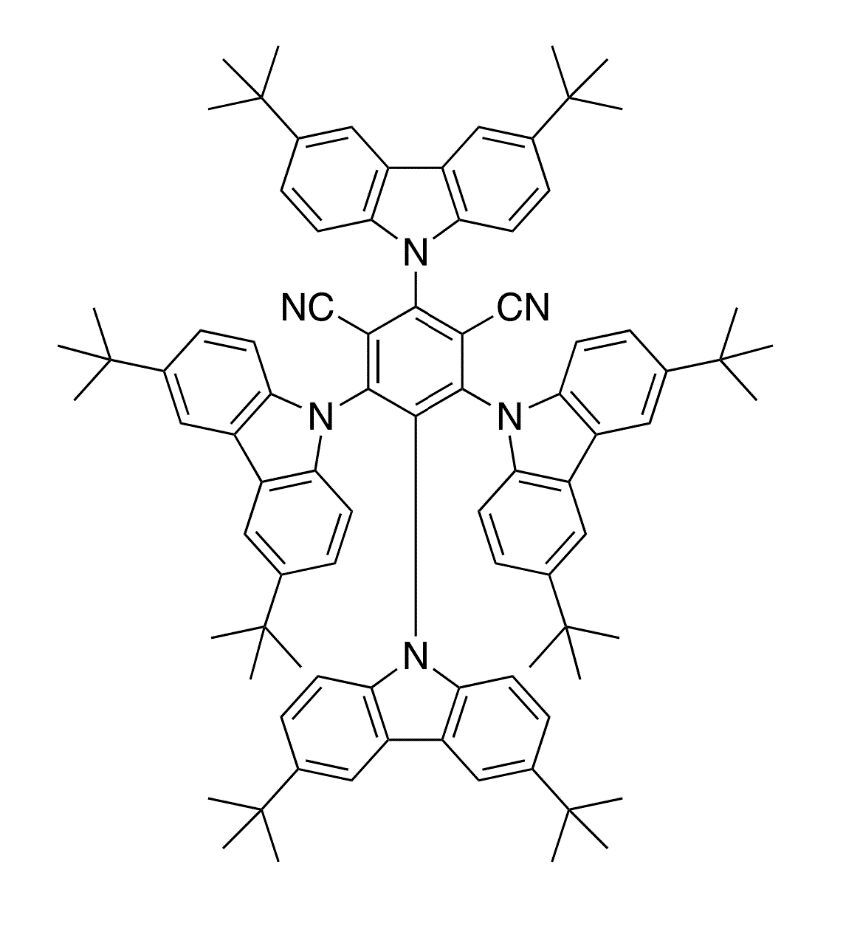4CzIPN-Bu
Safety Information
Hazard Statements
Precautionary Statements
Pictograms
Properties
| Signal Word | Warning |
Product Description
4CZIPN-BU, a derivative of the 4CZIPN family, exhibits unique properties that set it apart in the realm of organic compounds. Known for its exceptional thermal stability and compatibility with a variety of organic solvents, this compound is a valuable asset in the production of materials for optoelectronic devices. Its molecular structure, characterized by specific substitutions, enables it to support broad spectral absorption, making it ideal for applications requiring precise color rendition and high luminance. Additionally, its resistance to chemicals and high oxidative stability underscore its suitability for use in environments that demand both durability and longevity.
Application
The application of 4CZIPN-BU spans across several domains of optoelectronics, notably in the enhancement of OLED displays through optimized charge transport and reduced operational voltages. Its contributions extend to the field of OPV (Organic Photovoltaic) systems, where it aids in improving charge collection and thus increases the overall efficiency of solar cells. The compound's versatility in material science also indicates potential applications in sensor technologies and photodetection, leveraging its optical and electrical properties to innovate within these fields.
Articles:
- Achievement of high efficiency with extremely low efficiency roll-off in solution-processed thermally activated delayed fluorescence OLEDs manufactured using xanthone-based bipolar host materials
Publication Date: 15 Apr 2020
Chae Yeong Kim, Chiho Lee, Hyung Jong Kim, Jinhyo Hwang, Mallesham Godumala, Ji-Eun Jeong, Han Young Woo, Min Ju Cho, Sungnam Park and Dong Hoon Choi
https://doi.org/10.1039/D0TC01144D
- Rational design, synthesis, and characterization of a photocrosslinkable hole-transporting polymer for high performance solution-processed thermally activated delayed fluorescence OLEDs
Publication Date: 26 Feb 2020
Ji Hye Lee, Cheol Hun Jeong, Mallesham Godumala, Chae Yeong Kim, Hyung Jong Kim, Jin Hyo Hwang, Yong Woo Kim, Dae Hyuk Choi, Min Ju Cho and Dong Hoon Choi
https://doi.org/10.1039/C9TC07107E
- Pyrimidine-based bipolar host materials for high efficiency solution processed green thermally activated delayed fluorescence OLEDs
Publication Date: 03 Jan 2020
Jiwon Yoon, Chiho Lee, Su Hong Park, Dong Won Kang, Hyojin Kim, Ji-Eun Jeong, Han Young Woo, Chang Seop Hong, Sungnam Park, Min Ju Cho and Dong Hoon Choi
